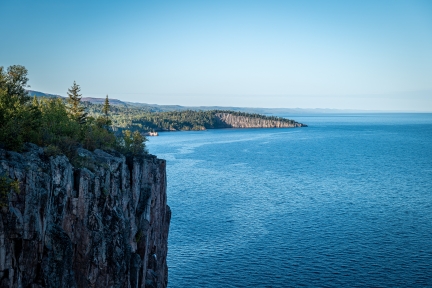
Although Minnesota is rich in lakes and streams, Lake Superior is easily the most spectacular waterbody in Minnesota.
Despite its immense size, Lake Superior is surprisingly vulnerable. The year-round cold temperatures of Lake Superior and small amount of nutrients entering the lake result in a simple and fragile food chain. Because Lake Superior is nourished by forests and watered by streams, changes on the land become changes in the lake. We find algae blooms in Lake Superior bays, decreasing clarity in the western arm of the lake, contaminated sediment in the Duluth-Superior harbor and toxic contaminants building up in the food chain.
What we can do to protect Lake Superior
Unlike waters such as the Mississippi and Minnesota Rivers, most of Lake Superior has never suffered the extreme degradation that once characterized these rivers. Slowly, carefully, and with considerable effort and expense, those waters are being reclaimed. The challenge with Lake Superior is to keep it as clean as it is now and to clean up the problems that have been found. The Minnesota Pollution Control Agency (MPCA) is tackling the restoration and protection of Lake Superior through a variety of approaches. Our Lake Superior programs include the following (note that the MPCA staff listed below can also be reached at 1-800-657-3864)
What's being done
Great Lakes Water Quality Initiative: As part of an effort between Great Lakes states and the U.S. EPA, the MPCA passed water quality regulations that apply to toxic chemicals in the Lake Superior watershed.
Lake Superior Binational Program: This collaborative program has focused on the entire ecosystem of Lake Superior, its air, land, water and human and wildlife. As one of the partners in this program, the MPCA is striving for zero discharge and zero emission of nine toxic chemicals from sources in the Lake Superior basin.
St. Louis River Area of Concern: The MPCA is one of many partners seeking to restore the quality of the water, sediment and habitat of the lower St. Louis River.
Lake Superior barrels
For information about the cooperative efforts of the MPCA, U.S. Environmental Protection Agency, and U.S. Army Corps of Engineers to locate and recover barrels dumped by Honeywell Corp. into Lake Superior in the 1960s: